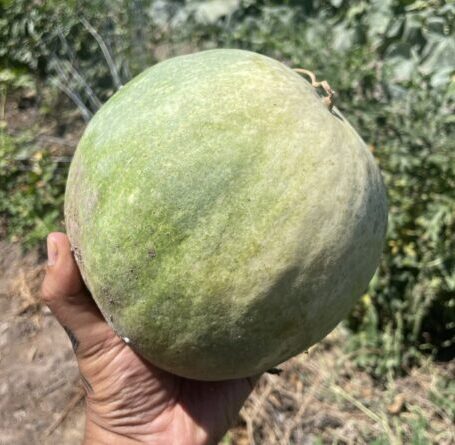Melon (Egusi)

Overview
Egusi melon seeds are large and white in appearance; sometimes they look brownish or off-white in color but the main egusi color is primarily white.n Nigeria, It is typically planted in May, with 2–3 seeds per hole, 1.5–2 cm deep, and 1 m apart.
Cultivation Tips
Sweet and edible while the Egusi Melon has bitter and inedible fruit pulp. Egusi Melon seeds are larger than watermelon seeds, and they are light colored. Plant 2-3 seeds per hole, 1.5-2 cm (0.5-0.75 in) deep, in holes 1 m (3 ft) apart. For maximum egusi yields, the fruit should be allowed to fully mature before harvesting, which is indicated by fully dried plant leaves. The seeds should be harvested 65 days after anthesis.
Performance
Nigeria is the world's top producer of egusi, a melon seed that's a staple in many West African countries.It is a lucrative agricultural venture in Nigeria. Known for its versatility in Nigerian cuisine, Egusi is a sought-after ingredient in soups and stews, making it a valuable crop for both domestic and international markets.
Challenges
Egusi Melon is relatively disease free in its native regions. Variegated locusts eat Egusi Melon seedlings. The beetles Tribolium castaneum and Lasioderma serricone can seriously damage stored seeds. Seeds should be stored in well sealed container to prevent beetle damage.
Benefits
Egusi is a gourd-like fruit that's valued for its edible seeds. It's high in protein, oil, fiber, carbohydrates, vitamins, minerals, and essential amino acids. Egusi can be boiled, roasted, or baked, and it's also used to make egusi pudding.
